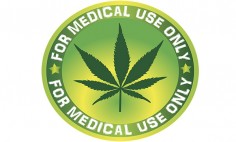Over the last few decades, medical errors have become one of the most common causes of death in the United States. Researchers at John Hopkins estimate that in the US, over 250,000 people die each year as a result of medical malpractice and negligence, making it the country’s third-leading cause of death. Medical malpractice can have far reaching physical, psychological and financial implications for victims, making it important to understand the topic and how to find recourse should the unfortunate happen.

A silent scandal
Researchers have a lot of difficulty producing a concrete number to represent the death toll of medical negligence. This is because of the administrative machinery behind death certificates and statistics. The Centers for Disease Control and Prevention (CDC) relies on death certificates to calculate the statistics behind causes of death. Unfortunately, human and system errors are rarely recorded on death certificates by medical examiners, physicians or funeral directors. As a result, the numbers produced by researchers in different studies range from 250,000 to as high as 440,000.
Each year, over $3 billion is spent by the healthcare industry on medical malpractice payouts. Insurance companies will often try to settle with the injured patient directly, hoping to avoid the involvement of attorneys and litigation. With such vague statistics, it’s very difficult to know the full extent of the issue posed by medical malpractice. This makes it all the more vital that people understand their rights and the proper procedure to take should the unfortunate occur. Medical malpractice lawsuits are both time consuming and costly. On top of this, less than 20% result in a payout for the victim. Despite this, contacting an attorney should be your first move. The quicker a case’s details are reviewed, the fresher the information available to the attorney. This way a medical neglect lawyer can give a more accurate assessment of the viability of your case and help you decide your next course of action.
Protecting yourself
Because it’s so difficult to inform yourself on the topic, reducing your chances of falling victim to medical negligence can be tricky. However, there are a few steps everyone should take during treatment. Having a friend or family member with you is likely the best of these. Having someone you trust by your side will give you the confidence to speak up if you feel something may be wrong during the course of treatment. They may also see something you don’t, alerting you to a problem that might have otherwise caused a serious issue. If you have any concerns in particular, ask your health-care provider and insist on satisfactory answers. Most importantly, if you feel that your medical care is not adequate or they fail to answer your questions, think about seeking an alternative provider if possible.
While it’s clear that medical negligence poses a serious threat to public health, the extent of this threat is still unclear. The haziness around healthcare statistics makes the problem harder to address, and until there is reform in the ways data is gathered and statistics are calculated, the situation is unlikely to improve. For these reasons, it is important for those seeking healthcare to understand their rights, trust their instincts, and speak up if they feel something is wrong. Doing so might be a hassle, but could save a lot of pain and stress in the long term.















